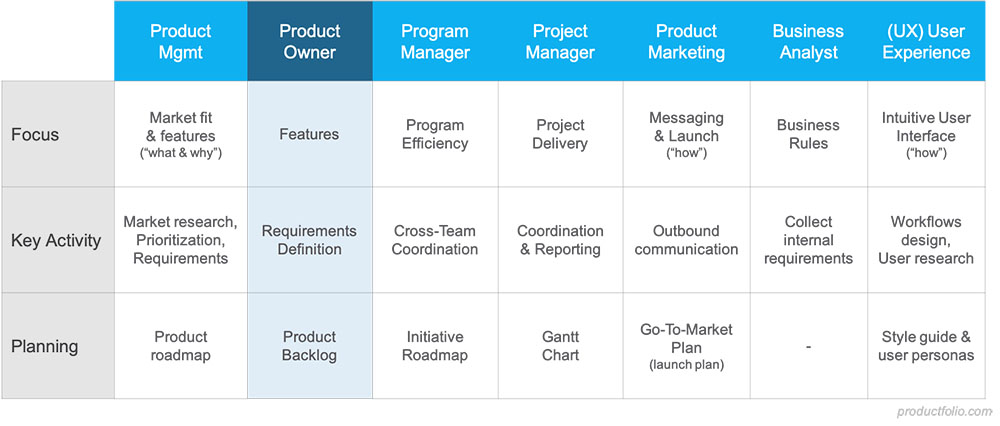Product Manager vs Product Owner
The role product owner is often associated with Scrum which is an agile framework that aids in the design, building and sustaining of complex products. According to the Scrum Guide definition, product owners are primarily tasked with maximizing a product’s value as a result of the efforts of a development team. They also manage a product’s backlog and are also tasked with making user stories for the development team as well as, serve as the voice of customers in the Scrum process.
A Product Manager role is much broader than the “heads down” Product Owner role. A good Project Manager is expected to be a customer spokesman, team champion, strategic leader and product visionary. Product Managers work in a multidisciplinary role which makes their role strategic. While a product manager is an independent role that can exist anywhere and anytime within an organization, product owners rely on the Scrum framework to carry out their duties.
To better understand the difference between a product manager and product owner, we shall review their roles in relation to strategy, customers and influence.

Strategy
The product manager role is strategic since they are the custodian of a product’s long-term vision including managing a product’s roadmap and sharing the strategy with the rest of the team. PMs ensure everyone in the development team is aware of their duties and how their role contributes to the overall success of the project. On the other hand, a product owner’s role is more operational as opposed to strategic. Their work is to let team members know which features and functionality should be realized during the development process. As opposed to formulating and maintaining the product roadmap, they support the product strategy which has already been put in place by the product manager.
Customers
A product manager has extensive knowledge of what customers are yearning for and understands how to solve their problems. Other than building user personas, PMs collect feedback and ideas from customers who are using a product while some organize online conservations with their customers to better understand their challenges as well as document features they’d like included in the future. A product owner in each sprint provides support and guidance to the engineering team to develop new features and functionality while keeping preferred customer needs as a top priority. In addition, product owners decide when user stories have been finalized.
Influence
The product manager works closely with a cross-functional team consisting of staff from engineering, support, sales and marketing among others. PMs also share a project’s progress with a company’s executives and ensure both the company and product objectives are met. The product owner ensures the implementation team achieves its efforts and works closely with the product manager and other team members to find out which set of features are next on the line. Product owners also collaborate with UX design teams to define precise requirements and create mockups.
A Product manager’s role is highly strategic that covers the entire product’s lifecycle while a product owner’s job has a narrower focus as they work primarily with the development team. A PMs role is a holistic, high-profile role that begins with customer delivery and culminates into product delivery. In addition, product managers rally the team, partners and external stakeholders to be part of the product direction and overall strategy. Since their role is both strategic and multidisciplinary, PMs are referred to as mini-CEOs. On the other hand, Product owners attend all Agile and Scrum meetings to make sure the development team’s focus is perfectly aligned with the roadmap set out by the product manager. They also provide feedback to the product manager regarding the status of the roadmap and what has been accomplished so far.


